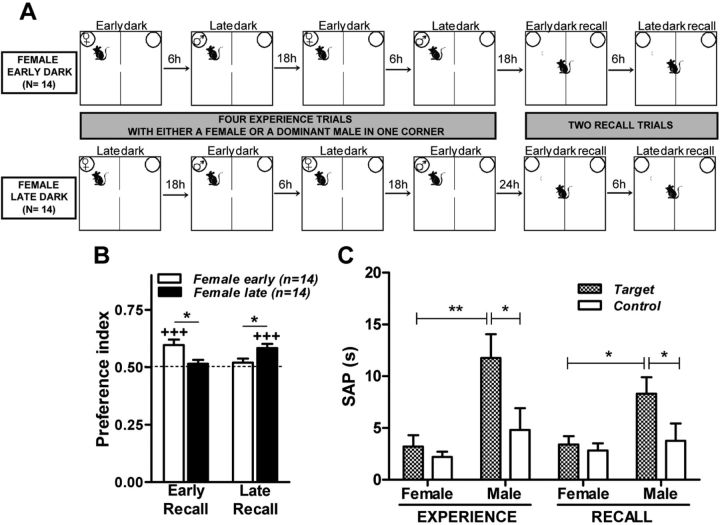Figure 3.
Memory of when. Mice show a preference for the location previously occupied by a female or dominant male only at the time of the day when they had encountered the female. A, Two groups of C57BL/6J mice were tested for their ability to recall the time of the day when they encountered either a female or a dominant male mouse (Female Early Dark, n = 14; Female Late Dark, n = 14). The preference for the location of the female and dominant male was calculated during two recall trials performed in the morning (Early Recall) and in the evening (Late Recall). The mouse drawn in A indicates the starting position in each trial. B, Preference index, during the recall trials, for the location previously occupied by the female or dominant male. *p < 0.05 (Newman–Keuls post hoc after two-way ANOVA for repeated measurements); +++p < 0.001 (Wilcoxon signed rank test) compared with chance level of 0.5 (depicted with a dashed line in B). C, Time spent in SAP toward the beaker containing the female and dominant male (Target, filled bars) and the empty beaker (Control, empty bars) during the female and dominant male experience trials and during the recall trials performed at time of female and dominant male encounters. Trials at time of female encounters include trials performed in the morning and in the evening with groups Female Early Dark and Female Late Dark, respectively. Trials at time of dominant male encounters include trials performed in the evening and morning with groups Female Early Dark and Female Late Dark, respectively. *p < 0.05 and **p < 0.01 (Newman–Keuls post hoc after two-way ANOVA).

